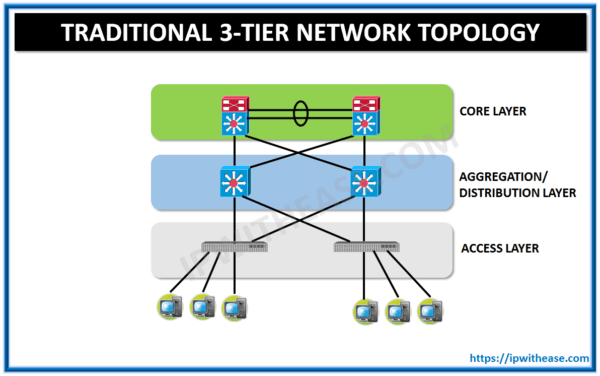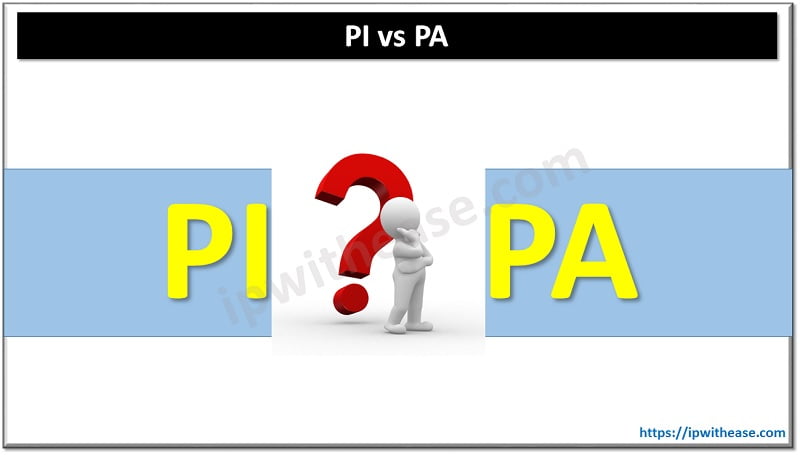Table of Contents
Cisco Leaf and Spine is a two-layer network topology composed of leaf switches and spine switches as compared to the traditional 3-layer network topology. In this blog, we discuss the 2-layer structure of leaf and spine topology and how it differs from the traditional topology in detail.
Traditional 3-tier Network Topology
We are all aware of the Cisco’s 3-tier network topology with the following 3 layers –
- Access Layer
- Aggregation/Distribution Layer
- Core layer

The Access Layer connects to the end devices (e.g. clients and servers). The Aggregation/Distribution Layer redundantly interconnects Access Layer switches and provides redundant connections to the campus backbone (i.e. the Core Layer). The Core Layer then provides very fast transport between Aggregation/Distribution Layer switches.
Use Cases
It is used in the traditional enterprise networks.
Features
- It has a hierarchical architecture
- It provides high latency as the traffic flows up and down the hierarchy.
- It is common in older enterprise LANs
Leaf and Spine Network Topology
When we talk about leaf and spine network topology, it is a 2-tier network topology. The topology is composed of –
- Leaf switches (connected to the end devices e.g. clients and servers) representing the Access Layer, and
- Spine switches (to which leaf switches connect) replacing the Aggregation/Distribution layer and Core Layer.

Leaf switches mesh into the spine, forming the access layer that delivers network connection points for servers. Each leaf switch connects to every spine switch. As a result, there’s no need for interconnections between spine switches.
Use Cases
- It is useful for a data center that experience more east-west network traffic than north-south traffic and caters scalable oversubscription ratios.
- Cloud environments
Features
- It has a scalable and flat architecture
- It provides low latency and high bandwidth
- It is built with Layer 3 routing (using BGP or OSPF).
Related – What is Cisco Express Forwarding?
Difference: Traditional 3-tier vs Leaf and Spine Topology
Below table summarizes the differences between the two types of network topplogies:
| Feature | Leaf and Spine | Traditional 3-Tier |
|---|---|---|
| Scalability | High | Limited |
| Latency | Low (flat design) | Higher (due to hierarchy) |
| Traffic Flow | East-west optimized | North-south dominant |
| Redundancy | Built-in with ECMP | Possible but complex |
| Routing | Layer 3 (typically BGP) | Layer 2/3 mix |
| Ideal Use | Data centers | Enterprise LANs |
Download the comparison table: Traditional 3-tier vs Leaf and Spine Topology
ABOUT THE AUTHOR

You can learn more about her on her linkedin profile – Rashmi Bhardwaj



